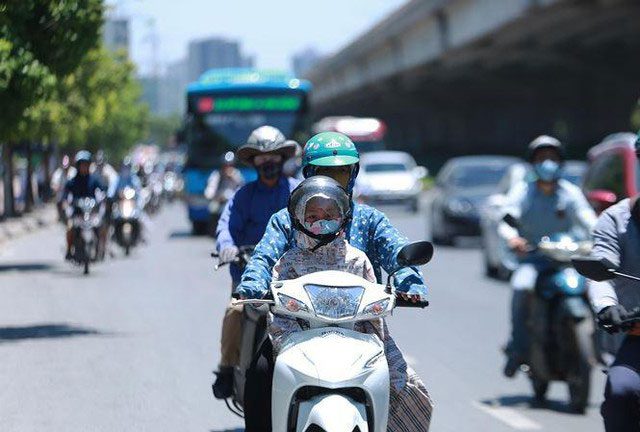In the next 3 days, temperatures in Hanoi and the northern region are expected to reach a maximum of around 37 degrees Celsius, with some areas hitting up to 39 degrees Celsius, even though it is still the beginning of summer.
The northern region is experiencing its first widespread heat wave of the year, with maximum temperatures reaching 37 degrees Celsius, an increase of 2 to 4 degrees Celsius compared to yesterday. In the Northwest, some places may reach 38 degrees Celsius.
The most intense heat will occur in areas from Thanh Hoa to Phu Yen, with common temperatures ranging from 36 to 39 degrees Celsius combined with low humidity, making residents feel even hotter.
According to forecasts, the heat wave in the Northern and Central regions is likely to last until April 5, while the Northeast region will continue until April 4. This weekend, temperatures in these areas will remain above 30 degrees Celsius, accompanied by scattered rain showers and thunderstorms.
The weather in Hanoi over the next 3 days is expected to reach a maximum of about 34 to 37 degrees Celsius during the day and 24 to 27 degrees Celsius at night. The hottest time of day, with temperatures exceeding 35 degrees Celsius, will be from 1 PM to 3 PM daily.
Experts note that the forecast temperatures in heat advisory reports may differ from the actual outdoor temperature by 2 to 4 degrees, or even higher depending on surface conditions such as concrete and asphalt.

This summer is expected to be hotter than the historical average. (Photo: SK&DS)
The meteorological agency stated that April is a time when cold air weakens. In the Northern region, this year’s heat wave is noted to have arrived one month earlier, with temperatures significantly higher than the historical average.
Explaining the weather phenomenon on Vietnamese television, Mr. Nguyen Van Huong, Head of the Weather Forecasting Department at the National Center for Hydro-Meteorological Forecasting, stated that the early heat in the North and Central regions is due to the influence of the El Niño phenomenon. The El Niño phenomenon causes the average temperature nationwide to trend higher than the historical average, contributing to the early onset of heat.
Mr. Huong also mentioned: ‘This year’s heat wave has three main characteristics: it arrives early, there are more heat waves than the historical average, and the intensity is stronger than the historical average, which may result in record high temperatures.‘


















































